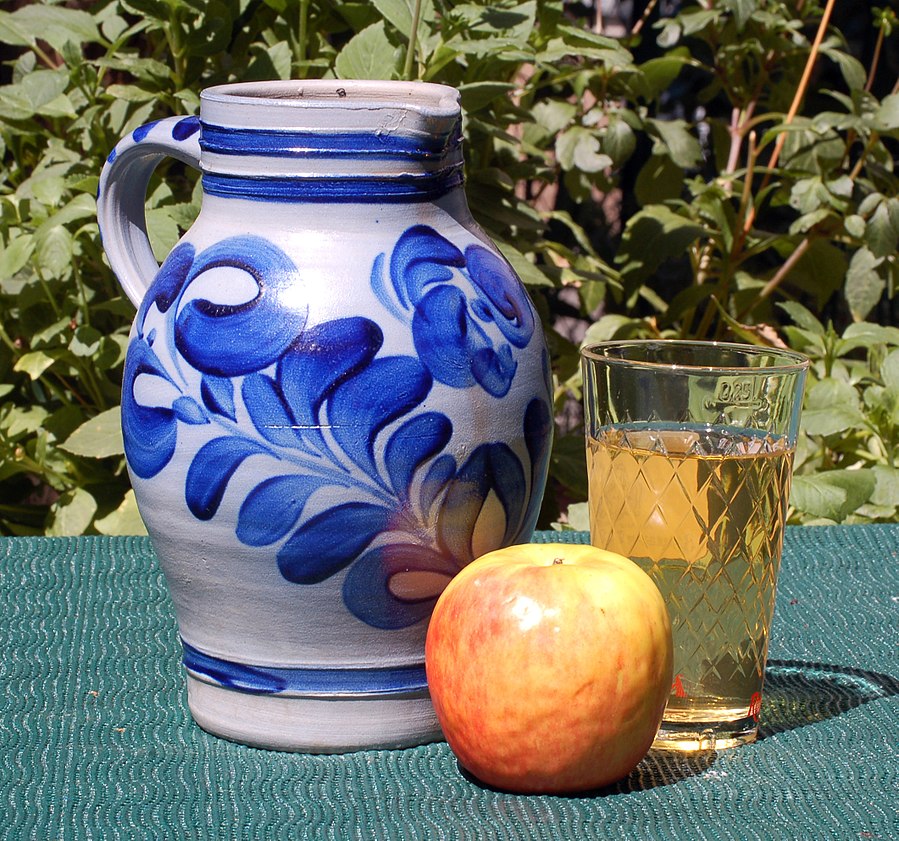Facts About Apfelwein
Apfelwein, also known as Viez or Most, is a German cider made from sour apples such as Bohnapfel or Speierling. With an alcohol content ranging from 4.8% to 7.0%, it offers a distinctly tart and sour flavor. Depending on the region in Germany, it may be called various names like Ebbelwoi, Äppler, Stöffsche, or Viez. In Frankfurt, a special type of Apfelwein called Speierling is produced by adding berries from the service tree, lending it an extra astringent kick.
The production of Apfelwein involves pressing apples to extract the juice, which is then fermented with yeast to produce the alcoholic drink. Sometimes, juice from the Speierling tree is incorporated into the blend. This cider holds significant cultural importance in Hesse, particularly around Frankfurt, Wetterau, and Odenwald. It is also prevalent in regions like Moselfranken, Merzig, Trier, and near Luxembourg. It’s more than just a beverage; it's an integral part of the local culture, celebrated through competitions, fairs, and even cider-themed songs.
Tradition holds a special place in the serving of Apfelwein. It is typically poured into a "Geripptes" glass, which features a diamond-cut pattern that enhances its sparkle and grip. In traditional Apfelwein establishments, it is often served in a 0.30-liter glass known as a "Schoppen." Additionally, a jug called a "Bembel" similar to beer pitchers in other countries, is commonly used. In regions like the Eifel and Trier, a unique drinking vessel called "Viezporz" made from white porcelain or stoneware, is also popular.
During the colder months, hot Apfelwein becomes a cherished remedy for colds and a comforting drink to warm up with. It is heated and infused with spices such as cinnamon, cloves, and orange slices, akin to mulled wine. Special events dedicated to this beloved beverage include the Viez Route, connecting Saarburg with Luxembourg, and the annual Viez Fest in Merzig, held on the second Saturday of October.

 Poland
Poland